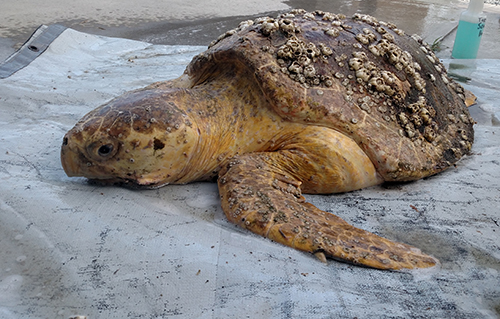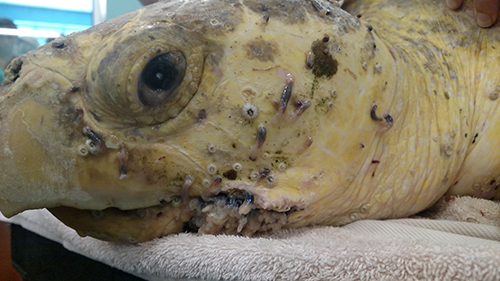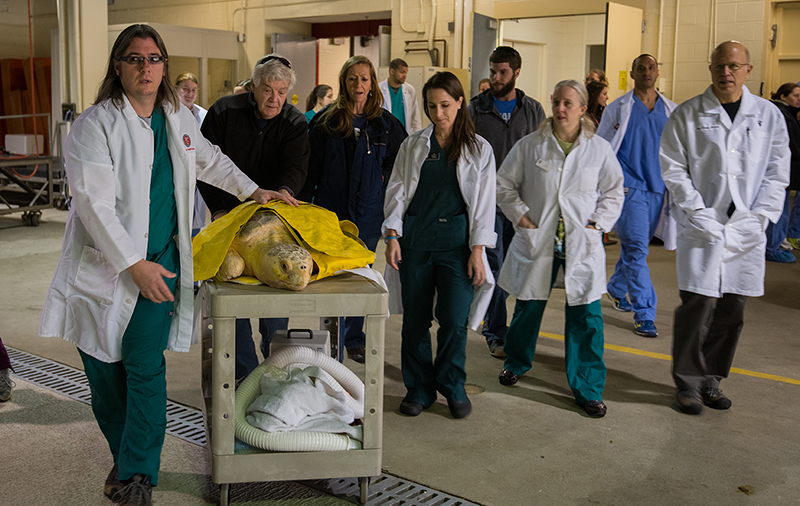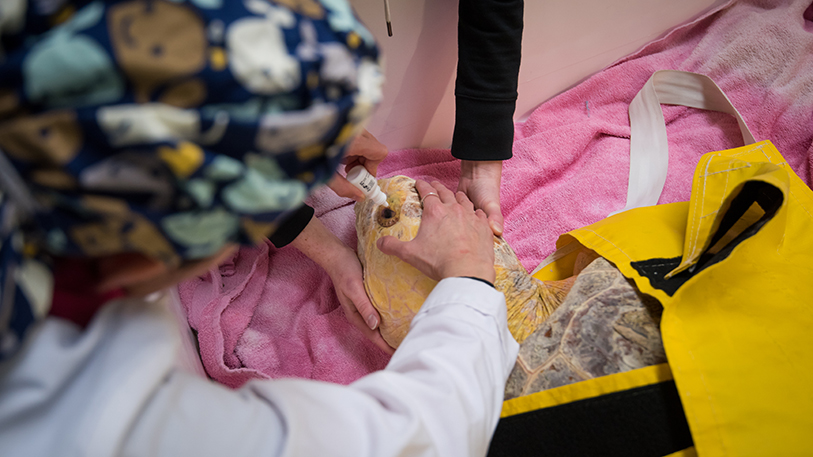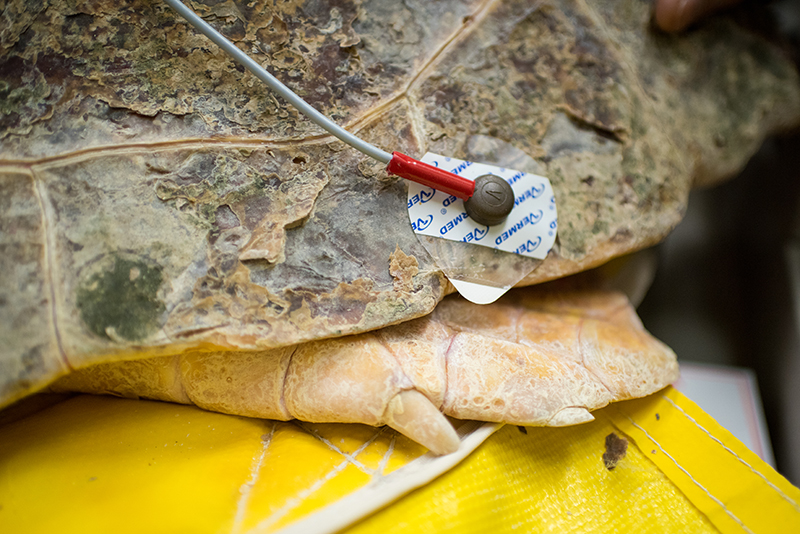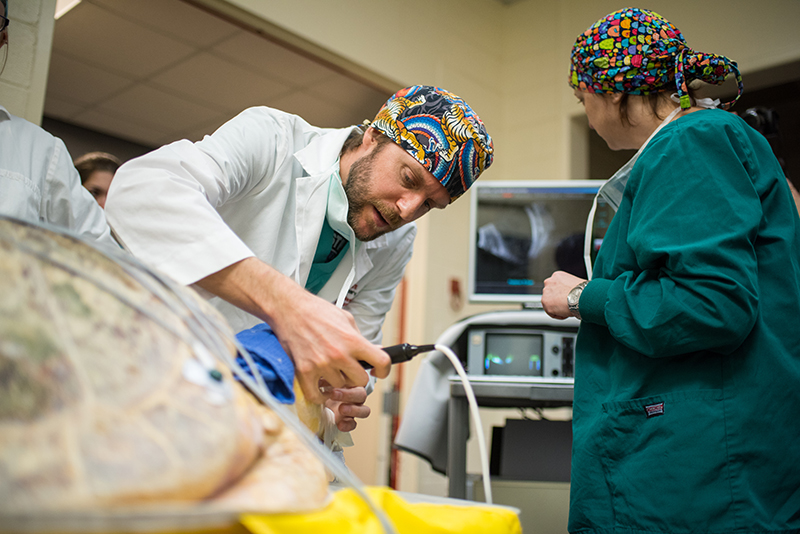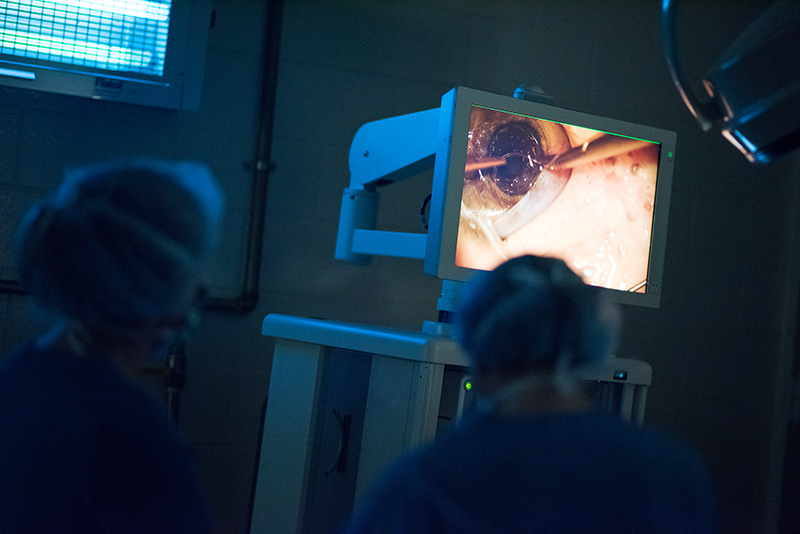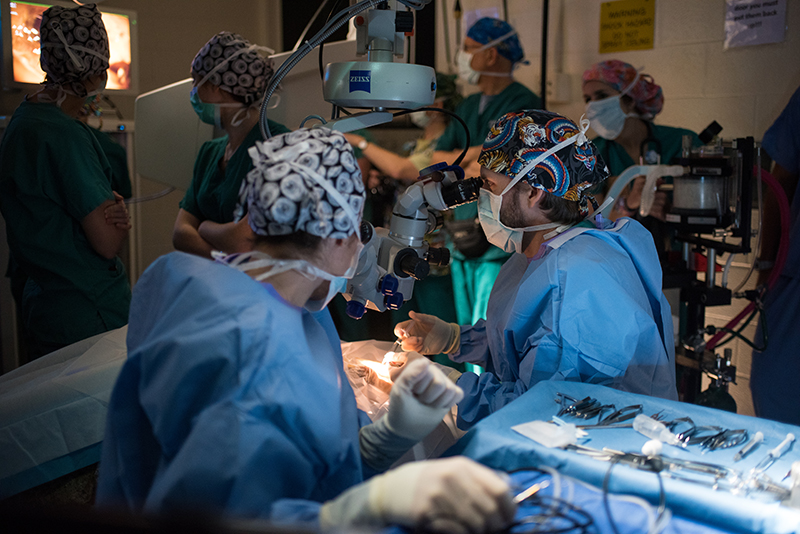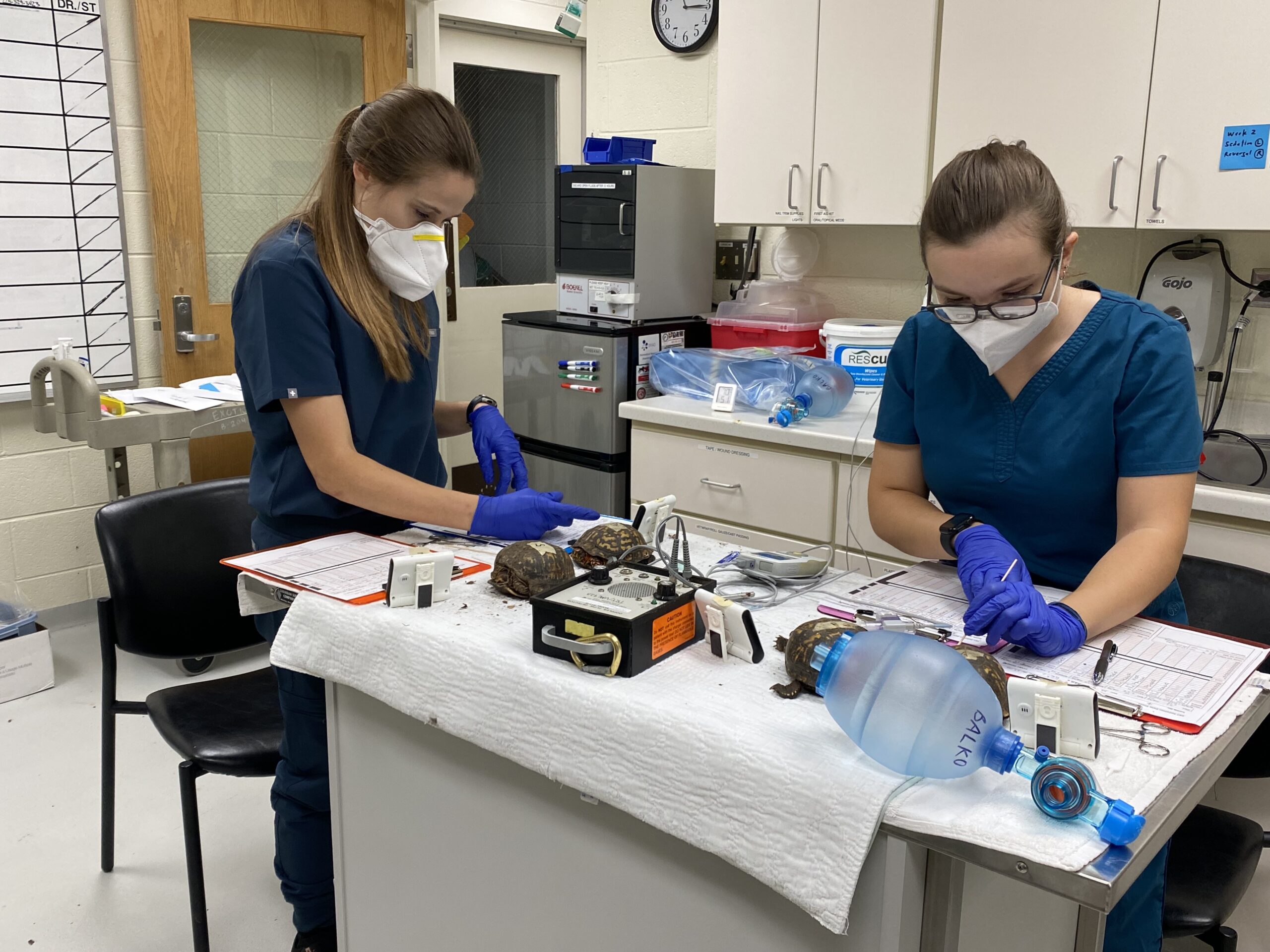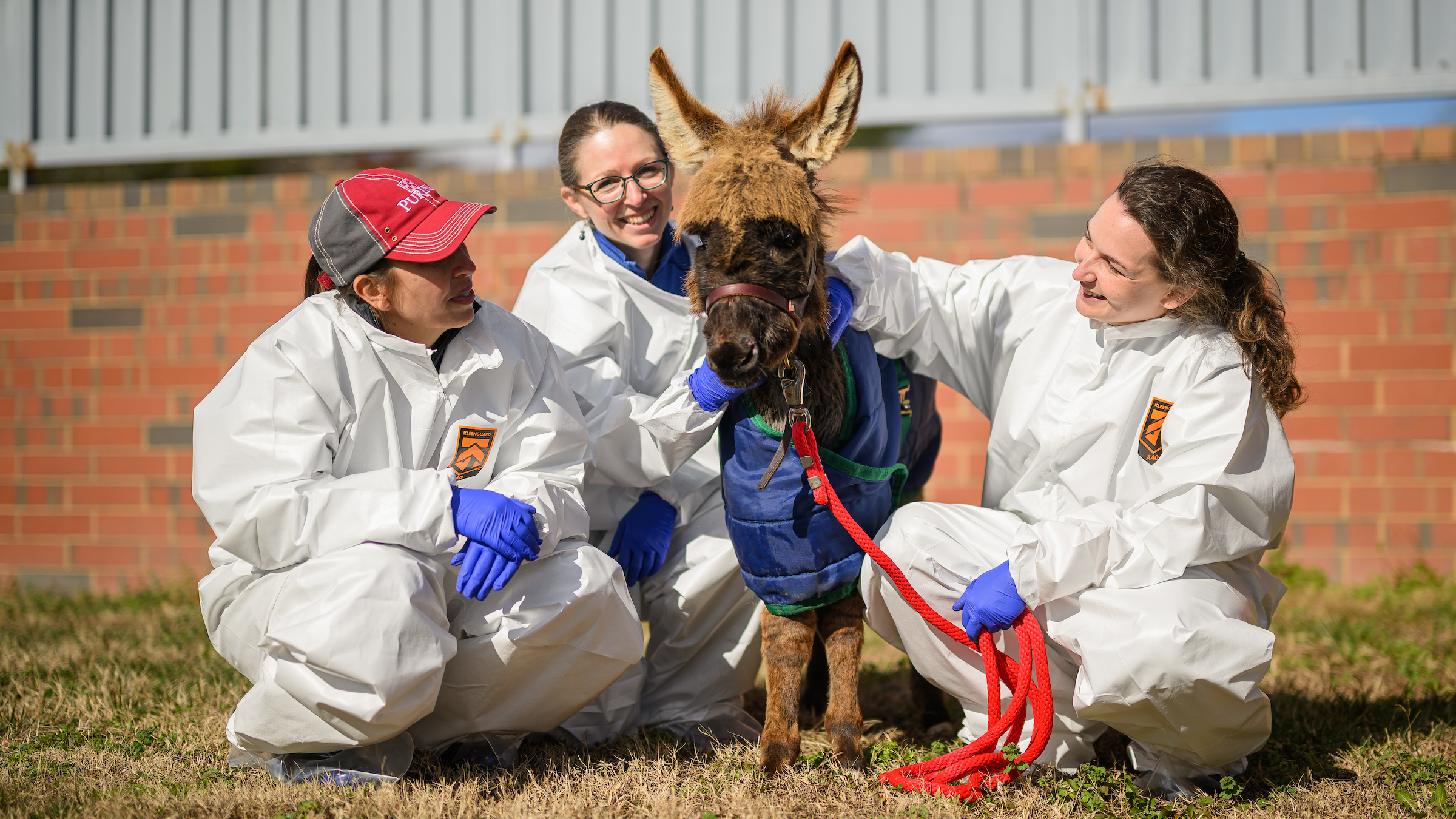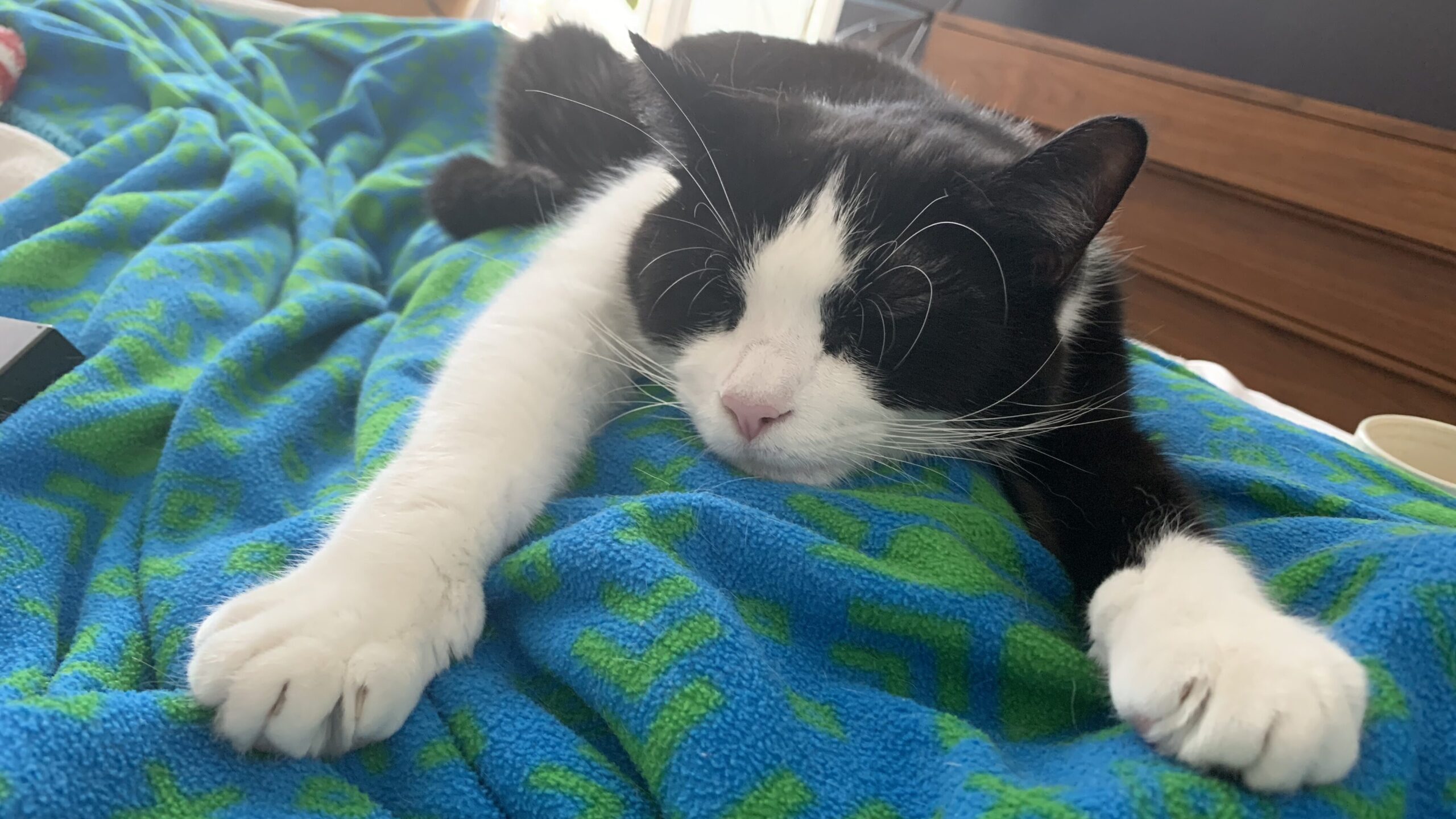Making Kayak Ship Shape
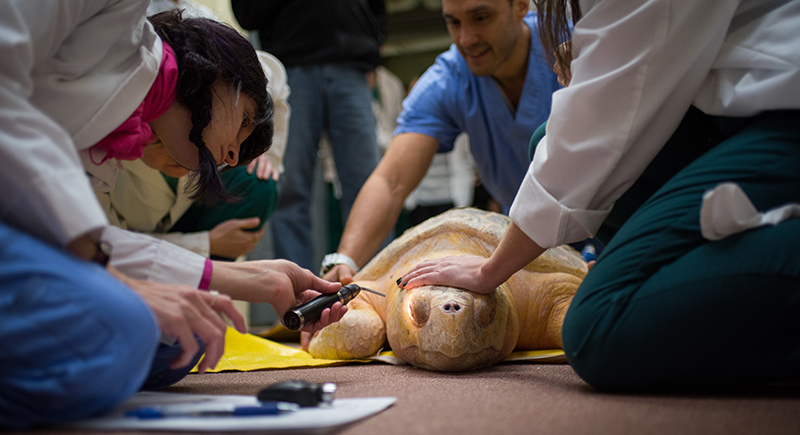
In honor of World Sea Turtle Day on June 16 this year, we bring you the story of Kayak, a female Loggerhead Sea Turtle that was discovered lethargic, emaciated, and infested with leeches, stranded on a shoal near Topsail Beach last August. She was discovered by a group of kayakers, hence her catchy name.
Loggerheads are one of the more numerous of the seagoing turtles, but populations have been shrinking, primarily because of humans. Entrapment in fishing nets and lines, boat strikes, and coastal development that interferes with reproduction are major causes. And that’s why a community of people dedicated to the protection and preservation of these magnificent ancient creatures has developed — a community that sprang into action when Kayak was found.
The Karen Beasley Sea Turtle Rescue and Rehabilitation Center volunteers quickly stepped in, admitting her to their sea turtle hospital. After undergoing an initial physical exam, Kayak was placed on antibiotics and fluids. She was noticeably underweight and in poor physical condition. She was also anemic, meaning her organs were not getting enough oxygen.
Kayak on rescue day:
There are a variety of reasons that could have contributed to Kayak being found in such poor condition on that shoal, but one that was most evident was that she was unable to see. Kayak had mature cataracts in both eyes that were so advanced it was impairing her vision severely, making everything a blur. Cataracts can form as a result of trauma, poor nutrition, or excessive UV light exposure, among other causes. Not surprisingly, being unable to see makes it tough for sea turtles to find enough food.
Her rescuers knew Kayak’s cataracts would have to be addressed, or they wouldn’t be able to release her, which is always the ultimate goal. However, the turtle was in such poor physical condition that even the thought of surgery wasn’t an option at first. She needed to get healthy. And, thanks to the care of the dedicated team of volunteers at the Beasley Center, Kayak became just that – healthy.
Kayak on surgery day:
A little over five months after her rescue, Kayak traveled to the NC State College of Veterinary Medicine and Veterinary Hospital to undergo cataract surgery. (We have a soft spot for all kinds of turtles, ourselves.) With two highly skilled teams from our Ophthalmology and Exotic Animal Medicine Services, and four hours in the operating room, Kayak’s vision was restored. It was the first time cataract surgery had ever been performed on a Loggerhead Turtle at NC State. In fact, the first cataract surgery ever reported on a Loggerhead was performed by NC State clinicians on a turtle housed at the aquarium at Virginia Beach, Virginia, although additional cataract procedures have been performed in recent years by colleagues at the South Carolina Aquarium . Kayak had come to the right place for help. After being cleared from postoperative monitoring, the Loggerhead returned to the Karen Beasley Sea Turtle Rescue and Rehabilitation Center for recovery, where she continued to improve each day.
After returning to the Beasley Center, the staff there noticed a definite change in her attitude. Where Kayak had been somewhat docile by sea turtle standards before, after her cataract surgery she became considerably more rambunctious — more normal behavior for Loggerheads, who actually tend toward the feisty and don’t usually make good roommates in captivity.

With a new outlook on life and healthy physical condition, Kayak was released back into the ocean on June 1, with tags, just in case she is ever encountered again. With her strength back and eyesight much improved, there’s every reason to believe that she will be happily feasting on crabs, mussels, shrimp and even jellyfish in no time, and that she has a good chance of living her allotted 50 or more years. With luck, she may even help produce the next generation of Loggerhead Sea Turtles.
[feature_title color=”black”]Kayak in the News [/feature_title]
- Kayak’s cataract surgery: http://www.twcnews.com/nc/coastal/news/2016/02/25/sea-turtle-rehabbing-from-cataracts-surgery–another-preparing.html
- Kayak released back into ocean: http://www.wcti12.com/news/organization-releases-14-sea-turtles-back-into-ocean/39846456
~Volstad~
- Categories:
